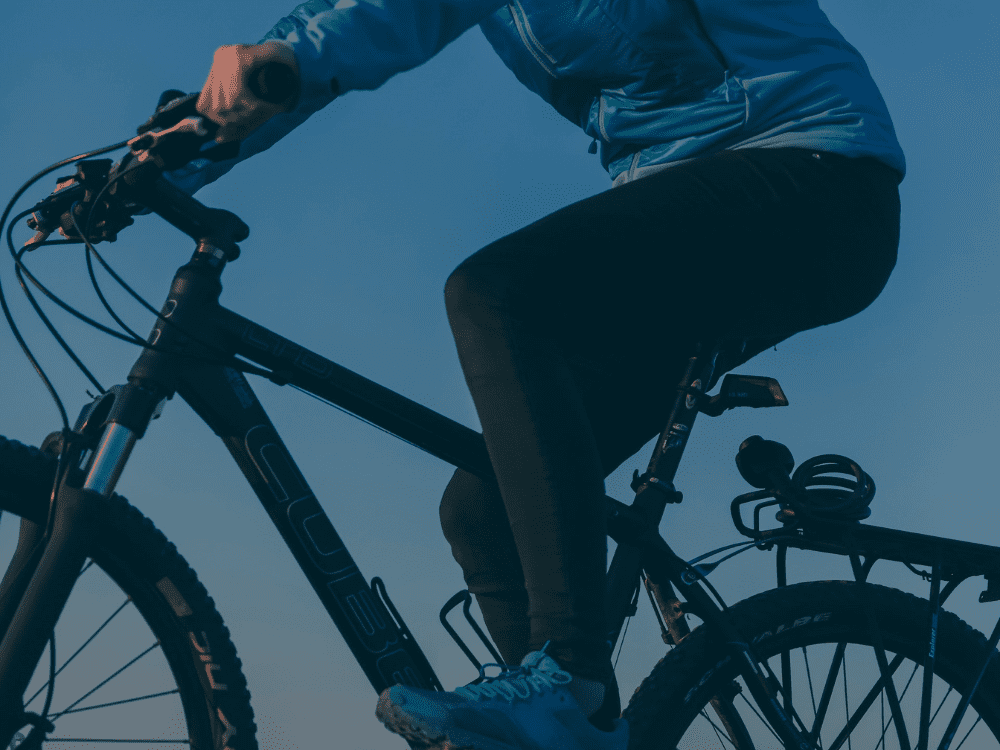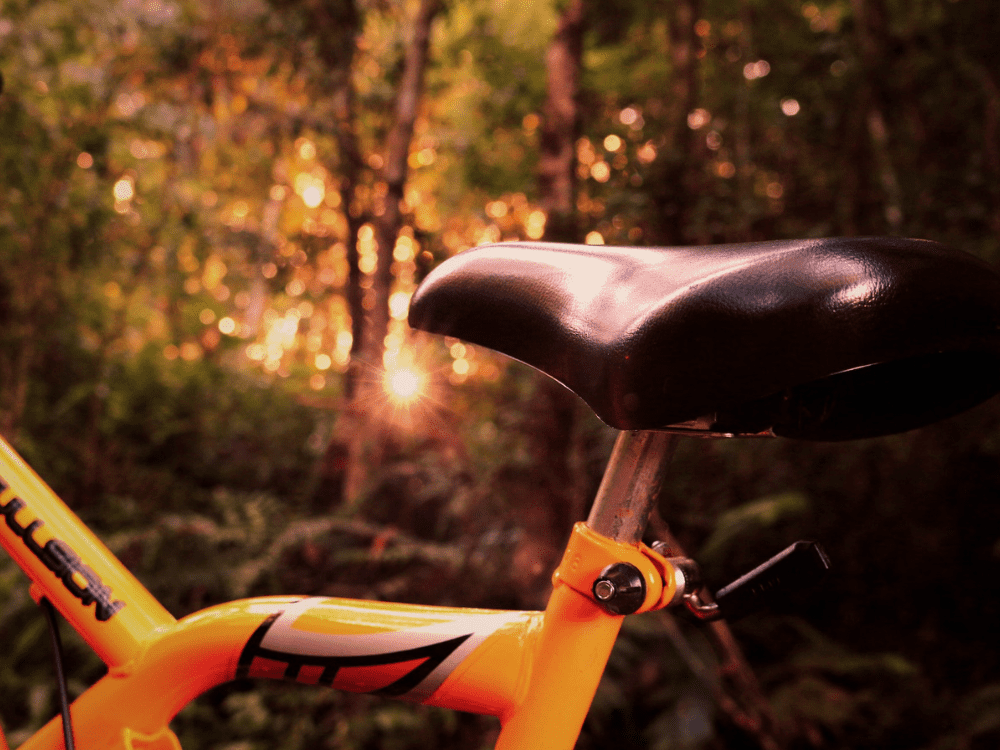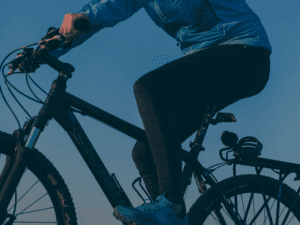Cycling is such a fun sport, and the experience of riding a bike is an amazing thing. You can use cycling to get fitter, make new friends, or just get out and explore nature.
One thing that we don’t want when we are cycling is to be uncomfortable. There are too many cyclists who feel uncomfortable is a typical thing that happens when cycling when it shouldn’t be.
Typically the places where people feel most uncomfortable are at the contact points.
The main three contact points are the bike saddle, the handlebars, and the feet.
The saddle is one of the most difficult places to fix discomfort as we are all slightly different on our behinds. Finding the perfect saddle for you is challenging, and a good place to start is to measure your sit bones.
In this article today, we will be speaking about how to find your saddle width and also the right type of saddle for you.
What Are Your Sit Bones?

The ischial tuberosity is the technical term for your sit bones, which sit inside your pelvis. You have one on each side of your behind, and women’s are naturally larger for their size than men’s.
It is very common to feel discomfort and numbness in your behind when riding as there’s a lot of pressure on nerves, and it can affect blood flow through the area.
Why Is It Important To Measure Your Sit Bones To Find A Bike Saddle?
It’s vital to measure your sit bones when it comes to picking an ideal saddle because it will give you a much better chance of getting the right saddle for you straight away.
Having the wrong can be a very painful experience, and you are going to want to avoid it at all costs. There’s a variety of negative outcomes to having the wrong saddle, such as;
- Discomfort
- Pain
- Numbness
- Saddle Sores
- Bruising
- Broken Skin
So by getting the saddle sit bone measurements, you can write off the majority of saddles that are not going to work for you making it easy to find the right one.
How To Measure Your Sit Bones

In the next section, we’re going to tell you how to measure your sit bones properly and get the right information you need. You will need a few things before you start though.
- A Piece of Cardboard, roughly 50cm x 30cm
- A Flat Chair or Seat with a little cushion
- A Pen
- Measuring Tape
This will be everything you need. Before you start, we highly advise finding a safe space to do this out of the way of anything that could get damaged or broken.
Step One: Set up
Set the chair up in a clear space and pop the cardboard on the seat, but you need the grooves of the cardboard to be facing out towards the front. So, where the straight lines run down the cardboard, they point forward in the same direction as you.
Step Two: Sit on it
Now you need to sit directly on the chair in a relaxed position. This is going to make an indent, and you are going to want to raise your feet to really ensure that you have made a dent in the cardboard without crushing it too much. This is called making a bone impression.
Step Three: Mark it
Now it’s time to stand up and get the pen and mark the cardboard exactly where the two biggest bends are. It should be fairly obvious, but if it isn’t, flip the cardboard and repeat the process. Now you will be able to get the bone width measurement.
Step Four: Measure and add the extra
Now you are going to want to measure the distance between the two markings that you have made and make a note of the measurement.
This measurement is your sit bone width. After you have done this, it is recommended you add 20mm to the overall measurement, and that will be the saddle width that you should use.
Step Five: Saddles
It’s not time to start looking for a new saddle, and below, we will give a guide about considerations to make before buying it.
Considerations
Although you might know your sit bone measurement and you can make a great estimation on what saddle you should be using, there are a few considerations that we recommend before getting the saddle you like the look of.
What kind of riding do you do?
Depending on the riding you are doing, you can gain comfort from using different types of saddles.

For example, if you are doing relaxed road riding or long-distance cycling, you are going to be sitting more upright, meaning you will be on the sit bones much more as your torso angle will be higher.
If you are on an aggressive racing bike or a time trail bike, then your riding position involves you leaning forward much more, less pressure goes on your sit bones, but it does put more pressure on the central part of the pelvis. The torso angle is much more aggressive. Short and stubby saddles are good for this.
Looking at the design of the saddle and the description the company gives, you can get a good indication of if it will work for you. An online bike saddle match will help you find the optimal saddle shape for you.
Where you get discomfort
As we have said before, we are all made slightly different, so looking at areas on your behind where you might get discomfort and then choosing a saddle will go a very long way.
It’s definitely worth assessing the pain you might get and the saddle’s shape to ensure they are going to help each other. Typically where the maximum pressure is will be where you get discomfort or on soft tissue.
Budget
Thinking about how much you want to spend prior is always a good idea before ordering anything.
You might also want to take advantage of shops with loan saddles for you to try so you can see if it works before you go to buy it.
A lot of shops call this saddle testing program and it can really help as a saddle selector tool.
Some saddles can cost as much as $300, and you don’t really want to spend that and find out it’s not the right size saddle for you.
Bib Shorts
Another interesting consideration to make is bib shorts. Like saddles, some are ideal for some people but awful for other people.
It’s always a good idea to make sure you have tried a few different types of bib shorts so you can eliminate that being the problem instead of having the wrong type of saddle.
Bike fit
Bike fitting is the process of fitting someone onto a bike properly. For example, ideal saddle height, reach, handlebar height, and even saddle angle.
Before choosing a saddle, we highly recommend going to see a bike fitter so they can ensure you are fitted correctly.
Sometimes something as simple as having incorrect saddle positioning could make you rock on the saddle, causing discomfort when the saddle could actually be fine for you.
Bike fit will have a big impact on saddle selection and having the proper saddle height for you will make riding much nicer.
Women’s or Men’s Saddles
There’s a big difference between women’s and men’s saddles.

You will typically be best looking at unisex saddles to start but if you do have any issues going for one for your gender might really help.
Men’s and women’s bones for saddle width are typically quite different.
Padding
Comfort saddles are not always padded. Padding doesn’t always make a saddle more comfortable. A comfortable saddle comes more from it being the optimal shape saddle for you.
Depending on your body, a narrower saddle or wider saddle could be more comfortable even with less padding.
Performance saddles will typically have less padding to make them lighter but this can come at the cost of saddle comfort.
Conclusion
Nobody likes an uncomfortable saddle and sometimes when we buy a bike the standard saddle isn’t very good.
Finding your sit bone width is very easy to do, and it comes with some incredible advantages when it comes to picking a new saddle for your bike.
We will always recommend getting a professional to help if you can as they have better tools such as pressure mapping.
Getting the right type of saddle and the right width will help so much on the journey of getting the perfect saddle.
Hopefully, by looking at your saddle width you can avoid trying 20-30 saddles.




